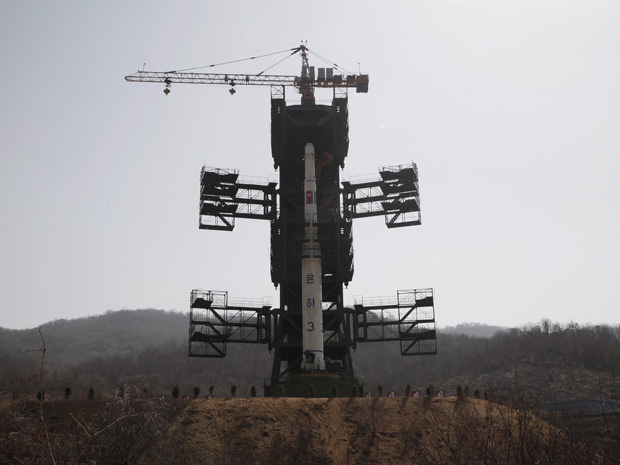 |
| Don't look into her eyes |
Wow. What a drink. If you came to Korea and didn’t experience this national ‘rice-wine’
treasure, then, clearly, you didn’t actually go to Korea, did you. For anyone
living here, Soju is part of daily life: whether you are in a restaurant, bar,
in a park, outside a convenient store, up a mountain, at ANY time of day, you will
likely see one of these distinctive green bottles, that help define the country’s
gastronomic culture, being slowly emptied into some happy individual.
And recently, with the publication of Drinks International’s latest figures, Jinro’s
brand of Soju has taken its place on the global piss-head scene, coming in at
NUMBER 1 in a list of the most-drunk spirits in the world, beating the likes of
globally famous drinks such as Smirnoff Vodka and Johnny Walkers Whiskey, by an
absolute country mile. I was genuinely shocked by the figures I saw (first brought to my attention by the excellent KoreaBANG blog), so did a
bit of amateur net-research into it all…
What’s really weird is that Soju is not remotely famous in other parts of the world, yet its popularity is huge, and localized. A staggering 552 million litres of Jinro Soju were sold last year alone (as well as a mere 215million litres by its lesser-rival Lotte), and 90 percent of all Soju is consumed within Korea itself. I’d never even heard of it before I came here.
Here are the stats according to Drinks International’s recent data
What’s really weird is that Soju is not remotely famous in other parts of the world, yet its popularity is huge, and localized. A staggering 552 million litres of Jinro Soju were sold last year alone (as well as a mere 215million litres by its lesser-rival Lotte), and 90 percent of all Soju is consumed within Korea itself. I’d never even heard of it before I came here.
Here are the stats according to Drinks International’s recent data
1
Jinro Jinro - Soju 61.38 million*
2
Smirnoff Diageo - Vodka 24.70 million
3
Lotte Liquor Lotte Liquor - Soju 23.90 million
4
Emperador Alliance Global Group - Brandy 20.10 million
5 Bacardi Bacardi - Rum
19.56 million
(*9 litre cases)
So if you add together all the Soju sales, it still eclipses the
other brands’ sales combined! Madness.
So what’s the secret of Soju’s success? I could probably write a PhD thesis on the matter, but for your benefit (I know that, reading this, you’ll be gagging for a drink soon…), I’ll condense it down to three points.
So what’s the secret of Soju’s success? I could probably write a PhD thesis on the matter, but for your benefit (I know that, reading this, you’ll be gagging for a drink soon…), I’ll condense it down to three points.
PRICE
 |
| Don't-you-understand-the-meaning-of-NO-ju |
My housemate, Dan, is an English Teacher at a University in Suwon,
and he recently asked his students what their favourite drink was. No prizes
for guessing that ‘SOJU!’ was their uniform answer. He asked them why and they
said “it’s the cheapest way to get drunk”. No shit. A 375
ml bottle
of Soju will cost less than (the equivalent of) 2 US dollars from a convenience
store, and at just under 20% alcohol, one bottle to yourself will get you merry.
(I’m sorry to inform my readers in the UK that a bottle of Soju
from a Korean restaurant in London might set you back close to ten quid! In
Korea, such a price would surely lead to revolution within hours.)
HISTORY
Soju has been brewed in Korea since around the 1300s, and was,
until the 20th century, something of a cottage industry, with
millions of Koreans making homebrewed Soju from locally produced rice, and
flavouring it with different fruits such as cherries or plums, so that each batch could be totally different, depending on who made it and where.
However, during the Japanese occupation (starting around 1910), Soju was
viewed, rightly, by the Japanese as an important part of Korean indigenous culture.
As part of a wider attempt to undermine Korea’s national identity, homebrewed production was all but eliminated, and there was an effort to encourage Koreans to drink other
forms of alcohol such as Sake and beer.
In spite of this, Soju’s appeal endured long after the Japanese
were kicked out in 1945, but sadly, the diversity of flavours, and the art of
homebrewing Soju was lost forever. Very few Koreans, especially in the cities,
have any clue how to make it anymore. Now, like so many things, production has
been consolidated by a few very large corporations, especially the
aforementioned chart-toppers Jinro and Lotte.
 However, as a nod to the old days, you will often see Koreans shaking
a bottle of Soju and tapping the bottom of a bottle (usually with their elbow) before
pouring it. This used to be an essential way of stirring up the sediment at the
bottom of the old home-brewed stuff. Now, with it being mass-produced to strict
guidelines in large factories, this technique is completely unnecessary, but
still, if you want to ‘act native’, do the shakey-tappy thing in front of a
Korean, for instant kudos.
However, as a nod to the old days, you will often see Koreans shaking
a bottle of Soju and tapping the bottom of a bottle (usually with their elbow) before
pouring it. This used to be an essential way of stirring up the sediment at the
bottom of the old home-brewed stuff. Now, with it being mass-produced to strict
guidelines in large factories, this technique is completely unnecessary, but
still, if you want to ‘act native’, do the shakey-tappy thing in front of a
Korean, for instant kudos.CULTURE
Koreans are social drinkers, and they like to eat while they drink. Soju fits this drinking culture of Korea perfectly.
First of all, unless you really are a Class A alcoholic, you
wouldn’t drink a bottle of Soju alone. It is intended to be shared, and there
is a whole lot of etiquette surrounding the way it should be poured (you should
never pour your own, you should always refill empty classes, being just two
elements of the rather arcane ‘rules’).
Also, it’s not like a glass of ale or a vintage wine. I mean, it doesn’t exactly taste great. Part of the fun is knocking back a few shots with your friends. Before you know it, you’ll be sucked in by thinking “well, it’s not a REAL spirit like Vodka, I can handle a few more of these babies”. Oblivion ensues… Such is the insidious ‘charm’ of the stuff.
Also, Koreans like to stretch out the drinking process by eating Anjou (drinking snacks) while they drink. This could be anything from fried chicken to a pajeon (a kind of Korean pancake), some Ojingo (dried squid) or one of a thousand other dishes they serve, to make the Soju more palatable.
Also, it’s not like a glass of ale or a vintage wine. I mean, it doesn’t exactly taste great. Part of the fun is knocking back a few shots with your friends. Before you know it, you’ll be sucked in by thinking “well, it’s not a REAL spirit like Vodka, I can handle a few more of these babies”. Oblivion ensues… Such is the insidious ‘charm’ of the stuff.
Also, Koreans like to stretch out the drinking process by eating Anjou (drinking snacks) while they drink. This could be anything from fried chicken to a pajeon (a kind of Korean pancake), some Ojingo (dried squid) or one of a thousand other dishes they serve, to make the Soju more palatable.
The idea of an English-style pub makes little sense to Koreans.
Why would anyone want to just drink beer for hours on end? The idea of making
yourself feel full and bloated, with only crisps to eat, just doesn’t add up to
a Korean soju-lover. And as much as I love and miss pubs back home, there is a
lot to be said for the way Koreans do it, and Soju is a key part of all that.
 |
| Hangover? What hangover? Get to work! |
Let’s forget, for a moment: the nasty hangovers the stuff can give
you (hey – they have hangover-cure drinks for that here!), its lack of a real flavour
(have a bit of squid mate), or the way it obliterates the memory so adeptly
that you can forget you’ve drank four bottles already and so demand another
bottle (come on - that’s a clever
drink).
Rather, let’s appreciate the positives of a drink which is cheap, fun
and sociable, and has enabled Korea to be a nation of admirably keen drinkers. Perhaps
that’s why the average Korean man can drink 90 bottles of Soju a year, and why
Soju is officially Number One - the King of Spirits.
Anyway, that’s your lot, I’ve got to go to the shop for some, er… milk.











